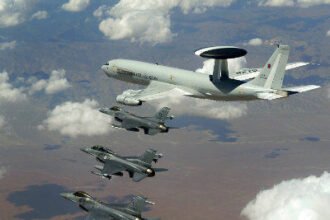What causes sleepless nights? For sure, too much caffeine can keep your eyelids open, however it’s more likely that worry and anxiety are the source. Fortunately, insomnia’s not the norm for United States Air Force (USAF) general officers and other government officials. That’s because with geospatial capabilities the USAF knows where every aircraft, piece of equipment and part is located and where it’s been—anywhere in the world.
What causes sleepless nights? For sure, too much caffeine can keep your eyelids open, however it’s more likely that worry and anxiety are the source. Fortunately, insomnia’s not the norm for United States Air Force (USAF) general officers and other government officials. That’s because with geospatial capabilities the USAF knows where every aircraft, piece of equipment and part is located and where it’s been—anywhere in the world.
Geospatial (also known as location intelligence) is a technology that allows enterprises to store, process and consume geographically based data. Geospatial data can be points (longitude, latitude), lines (a series of points), or even polygons representing a defined boundary. With geospatial, an enterprise can measure distances between two objects, or identify objects within, touching or traversing a specified perimeter. And while approximately 80% of corporate data has a location reference, there are plenty of enterprises not taking advantage of this valuable location information.
At Teradata Partners conference 2011 in San Diego, California, speakers Tim Cotton and Teal Walker presented how geospatial capabilities benefit the USAF. Specifically, leveraging data integrated from over one-hundred sources into Teradata database and Google Maps for visualization purposes, the USAF provides its users trusted information for inventory control including drill down capabilities to the part and supply level. And with geospatial, officials can visually examine where a particular asset has been throughout its lifecycle.
Teradata and Google Maps also help the USAF visually monitor “exceptions” via alerts—in real time—to track movement of materials, vehicles, commodities and assets. Now any aircraft or equipment going to the wrong place can be identified quickly and rerouted. And lastly with geospatial capabilities, the USAF can easily perform “proximity analysis” to immediately discover assets nearby and available to maintain mission support.
Geospatial enables “big picture” location analysis. The USAF knows where its assets are located at all times, and can direct them quickly should the need arise. Important operational details are captured and readily available via this geospatial solution, allowing government officials to clear their minds and get a good night’s sleep.
The USAF can pinpoint and direct its most productive assets at a moment’s notice. Shouldn’t your business have this same advantage?
* The author of this column is a Teradata Corporation employee






